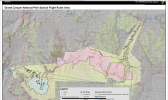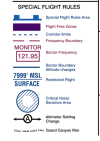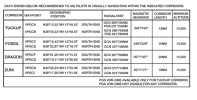You do have to maintain at least 10,000 until CAINE, on the segment between RRONY and CAINE, unless they tell you something different. After CAINE, you don't necessarily have to descend though, it depends-
Those attitudes at SASIE say "expect" and that makes them be not restrictions, not in the regulatory definition of the word restriction. The altitudes annotated on there are only there so you can do some quick pilot math... no, really, that's all it is. If ATC doesn't mention altitude at SASIE then pretend nothing is written on the plate; if they've said the magic words "descend via" without assigning you a hard altitude then this is actually a pretty nice arrival- since there aren't any published top altitudes then your vertical profile can resemble a descend at pilot's discretion profile.
Until they tell you otherwise (and they will...), you're free to stay high for as long as you please. Just don't go below any of those segment MEAs until you're cleared lower!
As you mentioned, the descent profile from CAINE to 5-6k at SASIE passes the sniff test (around 300' per mile/1000' per 3 miles, which is perfectly normal).
What may very well happen happen is they'll have you skip RRONY by clearing you direct to CAINE, and all in the same call telling you to "descend to 5,000 (or 6,000)" as well as "descend via the TRUUK."
If they want you to do the descend via but they also want you to maintain some exact altitude along the arrival, then that is the case when they say "descend via the TRUUK, except maintain _." Or if they already told you descend via but then they decide they want an altitude, then it's just "descend and maintain __" or "maintain __" as the case may be.
This is one of those "descend via" cases where they'll most likely assign an altitude for a couple of reasons: first, the published altitude at SASIE is only an "expect" and there are only minimum altitudes (but no crossing restrictions nor segment restrictions, just MEAs), so in a practical sense, sooner or later they need to give you some altitude, second, if DFW and DAL are on the south flow/landing to the south then ATC needs to get you under the arrivals coming from the northwest (you're coming from the northeast). That airline traffic flies over you on their way to the big airports, around the time you get turned south towards Alliance or wherever it is you're going.
Your GPS might depict the altitude at SASIE as mandatory. Some of the boxes are sort of programmed to do that- you're just supposed to know what the chart says and not press the buttons too quickly when you're programming the STAR. Or it might depict the altitude using slightly smaller numbers (to indicate advisory instead of mandatory) and you're supposed to go "ah, these numbers look a little different."
Just for fun, try plotting VKTRY (10-11,000), ZMMAN (7-9,000), and then either PHAUP (5000) or THASA (also 5000) on top of your TRUUK arrival. Those are from the VKTRY (victory) into DFW, from the northwest, when the airport is on the south flow. Everything coming from the northwest combines at VKTRY and then it splits after ZMMAN. A couple minutes after you get turned south from TRUUK, that's probably when you'll see them about 1-2,000 feet above you. (I'm not familiar with the equivalent arrival into Love.)
SASIE is also a fix on a seldom-used shortcut arrival into DFW, from the northeast: it's a hard altitude of 12,000 and 280 knots on the CAINE arrival.
When both of the big airports are on north flow then it's a different set of arrivals. Then the jet traffic from the northeast and northwest is kept even higher- so you might catch a glint in the sun or only their chemtrails... maybe.
For the DFW departures to the north (when DFW is on south or north flows, either direction), BLECO is a fix on a SID, although the airline traffic is usually well into the teens or the flight levels by then.
Have fun!



